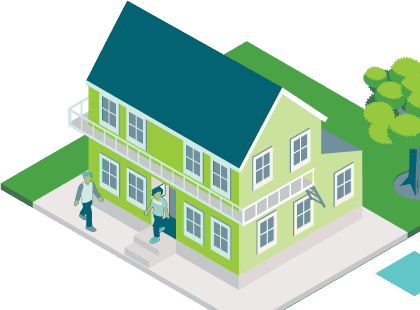Landlords should make sure their rental home can be well heated and ventilated. Tenants are responsible for ventilating the home during their tenancy.
Heating your rental home
To meet the heating standard landlords must provide one or more fixed heaters that can directly heat the main living room. The heater(s) must be an acceptable type(s) and must meet the minimum heating capacity required for the main living room.
Keeping the home ventilated
Good ventilation reduces the amount of moisture in your home. This helps keep tenants healthy and also makes the home easier to heat.
Ventilation is also one of the healthy homes standards.
If you are a landlord, you might also want to consider:
- a dryer that vents to the outside
- a central ventilation system that sources air from the outside.
Tenants should open doors and windows regularly to let fresh air in, even in winter.
Opening windows when cooking or showering, gets rid of excess moisture in your rental home. Keeping the bathroom door closed during and after showering can help prevent steam from spreading further.
Poor heating and ventilation can lead to mould growth and dampness.
Maintaining heaters and ventilation systems
Landlords are responsible for maintaining any heaters and ventilation systems. Tenants are required to keep the rental property reasonably clean and tidy, this includes any heat pumps or heaters installed for the healthy homes heating standard or supplied as part of the rental property.
Where it is accessible and easy to do so, a tenant must clean a device and its filters to a reasonable standard as well as keeping gardens or lawns clear of external units. It is best practice for landlords to show tenants how to clean and keep clean any accessible filters or units when doing the first inspection of the property.
Where any technical knowledge or any specific tools are required, or the filters are not easily accessible, the landlord is generally required to maintain the device, including cleaning. This comes under their obligation to keep heater(s) in good working order.
For usable fireplaces, the landlord will need to keep the chimney safe. They are also responsible for regular chimney cleaning, as this requires technical knowledge and specific tools. Regularly cleaning of the chimney may also be required for insurance purposes.
Under the healthy homes standards, landlords will need to close up open fireplaces or block the chimney unless the tenant asks in writing for it to remain usable and the landlord agrees.
Benefits for tenants and landlords
When a home is warm and dry, tenants are less likely to suffer health problems caused by cold and damp. This includes respiratory illnesses like asthma and more serious diseases like rheumatic fever.
Avoidable illnesses can result in unplanned medical bills and time off work. These extra costs can increase the risk of missed rent payments. Tenants are also likely to stay longer if their home is warm and cheap to heat.
A well-insulated home that has energy-efficient heating and appliances is easier to market and can attract a higher rent.
Check how warm, safe and dry your house is and if you have efficient heating.
Last updated: 01 July 2025
